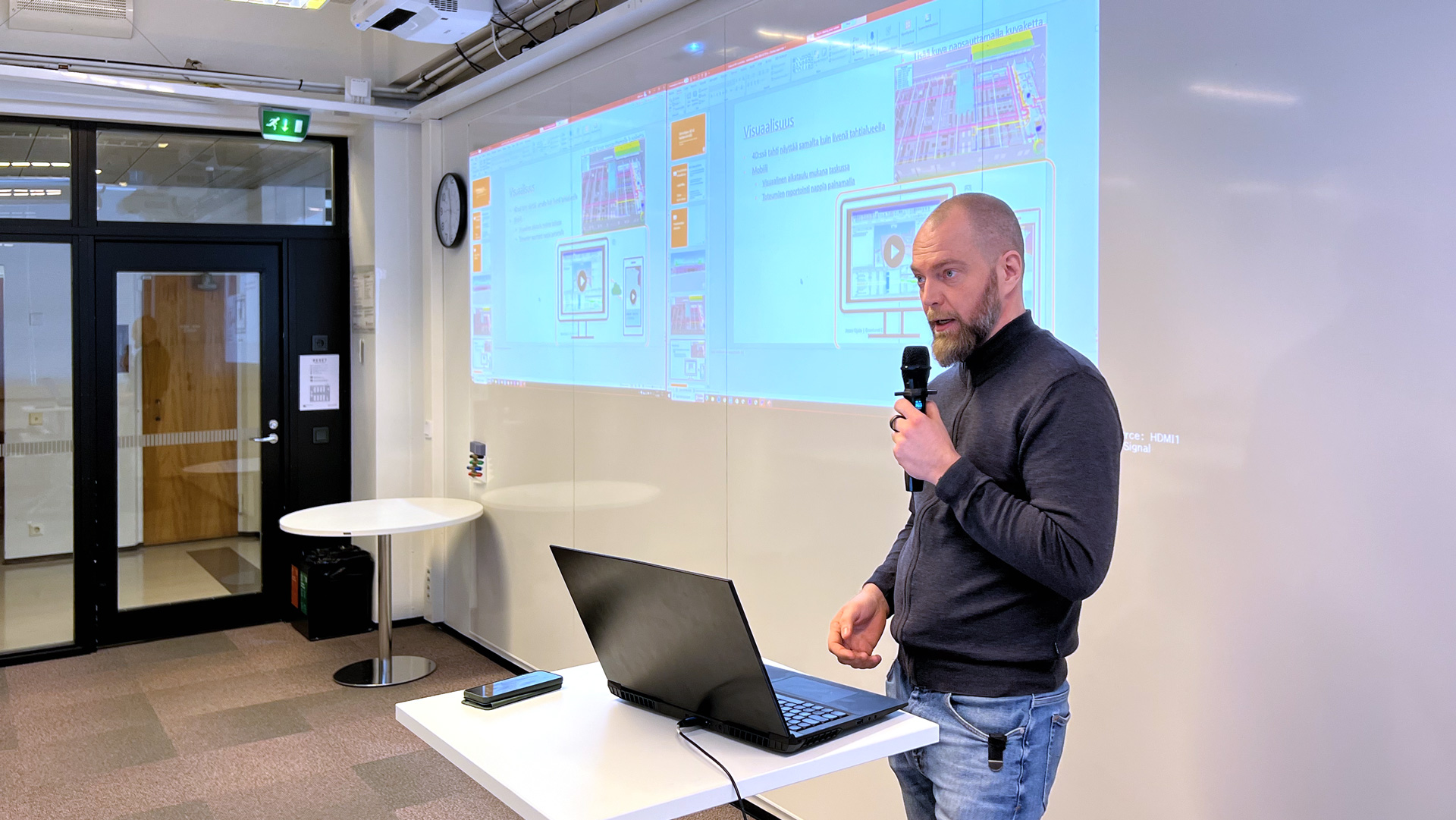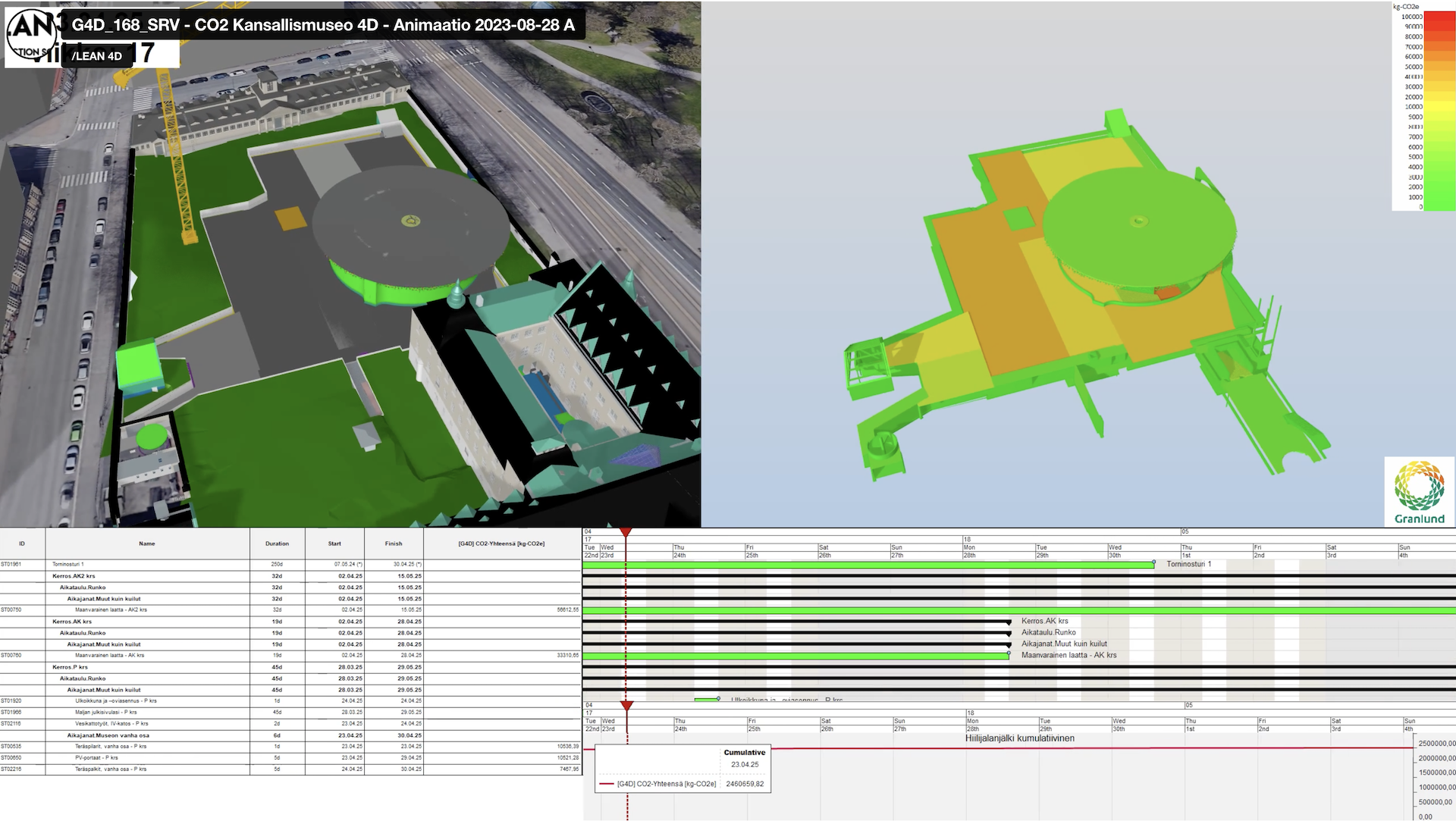4D BIM has garnered significant attention in recent years. It is a method that adds a time and resource dimension to building information models. I sat down with Jouni Ojala, a Granlund expert in the field, to discuss the transformative impact of 4D BIM and how it can be applied in design scheduling.
In my 2021 interview with Jouni, we discussed the practicalities of 4D BIM. He was then leading Lean 4D, a startup later acquired by Granlund. Jouni’s team continues to provide the same 4D BIM scheduling service as previously, but now as a part of a leading design and consulting firm.
The sorry state of scheduling
The construction schedule is the backbone of the whole project. Unfortunately, Finnish general contractors don’t typically invest enough time and knowledge to make it as detailed as possible. Jouni cites an agent from a construction company who bluntly described the existing scheduling level as “terrible,” indicating a dire need for improvement.
GEs want to keep the schedule on a schematic level. That way, they can secure a free playing field to adjust internally to avoid schedule overruns. However, such a schedule is not a functioning tool for managing a complex project.
Every project participant can create task lists for themselves, but no one can pull together a comprehensive, well-synchronized schedule from dozens of separate pieces.
Clients could require better service from the GEs. However, they are unwilling to get involved in construction scheduling because they fear they could be held responsible for the outcome.

The transformative potential of 4D BIM
4D BIM allows contractors to construct a building or infrastructure project virtually. It provides a manufacturing-level control over the project.
The shift to 4D scheduling is not just about creating a sequence of work on paper; it’s about investing sufficient effort to make schedules realistic and actionable.
Jouni outlines the benefits of 4D BIM, highlighting its capacity to concretely represent elements or groups of elements within a project timeline. This granular approach ensures that the pieces fit theoretically and are feasible and verifiable at a real-life level.
This level of control and transparency should be an easy sell. That’s not the case, however. 4D BIM challenges the status quo where the general contractor has a proprietary hold over the schedule. That’s why selling the 4D BIM concept and service to GEs has proven difficult.


Breaking new ground
Recently, Jouni’s team discovered a new arena: 4D BIM for design scheduling.
The new service addresses a need that concerns construction clients and their project managers. These people are responsible for creating design schedules but typically lack the means to do it effectively.
“Design schedules don’t actually exist nor are monitored properly,” Jouni remarks.
Design schedules are currently a white space Jouni’s team recently entered with excellent results. Many clients welcome the opportunity to get design scheduling in order and synchronized with construction.
“We aim to optimize the design schedule similarly to the construction schedule,” Jouni emphasizes. “That way, we can ensure a steady process flow and consistent use of resources.”
Virtual planning of design
Jouni explains how scheduling design tasks uses the same logic as construction schedules. This involves making the schedules realistic and ensuring that design tasks are feasible and can be verified at the real-life level.
The initial design scheduling uses an architect’s space model as a starting point. The simple model indicates the location and extent of the area to be designed.
It is common for a contractor to ask for designs without warning on the very day they are needed. 4D BIM ensures designers know proactively what they should work on today to serve construction needs promptly.
Promising results
Jouni recounts the success story of a design schedule project initially met with skepticism but eventually led all involved to realize its benefits.
“Even within our firm, MEP design project managers were initially skeptical. When we generated a resource plan and invoicing projections automatically as a schedule printout, their eyes opened,” Jouni reports.
4D BIM saves hours of manual work and, more importantly, communicates the relationships between design disciplines and contractors. This approach ensures all stakeholders understand their roles and responsibilities, reducing miscommunication and inefficiencies.
The initial success has led to subsequent adoption across multiple sub-projects, demonstrating the practical value of 4D BIM in enhancing clarity and order in the planning process.
Future outlook
Jouni states that his team’s scheduling work is relatively straightforward, but surprisingly, general contractors don’t have the staff to do it. That’s why his team is at maximum capacity even during the current construction downturn.
4D BIM provides a lot of information for construction management. Jouni envisions the next logical step: integrating digital tools for weekly and daily site management. For example, Bentley’s Synchro 4D Pro provides a mobile app for communicating with the site.
Every worker could view their daily tasks on a mobile device and report when the work is started and completed. The information would be connected to invoice approvals. Imerso, a construction monitoring software, could be integrated to help automate progress monitoring.
Internationalization
In closing, we touched upon international 4D BIM adoption. A few consultants in Germany and the UK provide services similar to Granlund but are not necessarily as data-focused.
Jouni described their pilot project in Germany for a Bavarian building control authority. He also mentioned another pilot in the USA for an infrastructure consultant looking for a partner to create digital twins.
Jouni Ojala’s interview offers a compelling perspective on the growing importance of 4D BIM in the construction industry. It underscores the necessity for cultural shifts within the sector to embrace new technologies that promise greater efficiency and better project outcomes.
To learn more about Granlund’s 4D scheduling services, visit https://www.granlundgroup.com/services/4d-scheduling-services/
View the original article and our Inspiration here


Leave a Reply